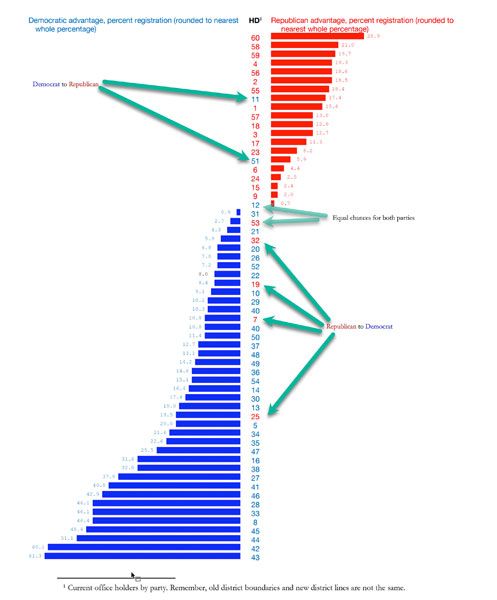Primary sets stage for fireworks in fall

The primary election has come and gone.
It delivered big news for progressives with their candidate’s seizure of the Democratic gubernatorial nomination. It delivered interesting news for Republicans, as the winnowing process in the governor’s race ended up giving them a strong candidate as well.
Oregon is now in line for a first-in-the-nation three-way, all-women gubernatorial contest — and it could prove the most expensive in state history.
The victory of former House Speaker Tina Kotek over State Treasurer Tobias Read in the Democratic primary showed the strength of the progressive wing of the party.
Kotek beat the more moderate Read in 24 of Oregon’s 36 counties. Read generally did better in Central and Eastern Oregon, but lost several counties on the east side of the state as well.
Going into the fall election, Kotek will have to make the case for her progressive agenda well enough to win over a significant number of unaffiliated voters, as she probably won’t convert many Republicans.
Former House Minority Leader Christine Drazan topped a field of 19 on the Republican side, despite claiming less than a quarter of the total vote. And a wide range of views were displayed among those candidates.
A key goal for her will be to get endorsements from her leading rivals and fold their voters into hers. In addition, she will have to appeal to a large number of unaffiliated voters.
Then there’s the candidate who wasn’t on the gubernatorial ballot in the primary, Democrat-turned-independent Betsy Johnson. She was running just as many ads as the other leading candidates in order to stake her claim for the fall.
Coming off a long run in the Oregon Senate, she has to gather about 24,000 signatures this summer to officially enter the election. But there’s little doubt she will be able to do so.
There have been four previous gubernatorial elections with an all-female cast: Nebraska in 1986, Hawaii in 2002, and Oklahoma and New Mexico in 2012. But Oregon will be the first with three women on the ballot, each with a shot at actually winning.
You can expect some national press over this.
What type of campaign will these three candidates run? If election night is any indicator, they will be taking tough stances against each other, painting the other two as out of touch with the “real Oregon.”
It will be, of course, up to us as voters to define what “real Oregon” actually is.
Four years ago, Kate Brown and Knute Buehler spent about $30 million between them.
With three strong candidates in 2022, it’s not unreasonable to think they will each raise at least $10 million. In fact, Johnson is already at $8 million. So watch for a loud and defining campaign in the fall.
Oregon’s new 6th Congressional District also featured a large cast of candidates. The Republican side was much quieter than I anticipated, though.
State Rep. Ron Noble never really raised the money to run a campaign capable of consistently reaching voters. Winner Mike Erickson was more effective at getting his name out.
Among Democrats, the record-setting spending of Super PACs on behalf of Carrick Flynn certainly raised his name recognition among voters. But State Rep. Andrea Salinas’ campaign, based on her track record on state and local issues, propelled her to a strong victory.
For the fall, watch to see if national Republican groups think Erickson has a good chance to win this new seat.
If they do, this will be a hard-fought and expensive race. If not, Salinas will be favored in a district with a 5% to 6% Democratic registration edge.
The Oregon Legislature will be a battleground once again, but this time with newly drawn districts. Early indicators tell me that only about five or six of 60 House seats will be truly competitive, and only two of 16 seats up in the Senate.
But there will most likely be bigger changes.
In the Senate, two seats held by Republicans now display significant Democratic majorities, and one seat held by a Democrat now features a strong Republican majority. In the House, two seats are likely to change from Democrat to Republican, and four seats from Republican to Democrat, for the same reason.
That suggests the supermajorities Democrats hold in both chambers stand to continue.
One of the biggest issues I will be watching in November is the role unaffiliated voters play.
Unaffiliated voters (34.6%) now outnumber both Democrats (34.3%) and Republicans (24.4%). This looks like an advantage for the Democrats, but it is easy to imagine an anti-incumbent surge leading unaffiliated voters trend Republican.
In past elections, registered Democrats and Republicans have voted at a much higher rate than unaffiliated voters.
In 2020, both major parties logged turnouts in excess of 90%. The unaffiliated turnout was only 65%.
If the unaffiliateds look like they are voting at a rate closer to the party members, we could see some interesting dynamics play out in November.










Comments
Lulu
Does anyone understand this chart?
sbagwell
Yes.